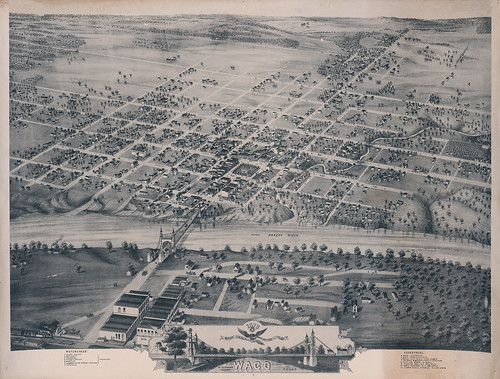By Brian Simmons, Archival Assistant and Digital Input Specialist

Baylor University’s Waco roots are tied to the somewhat short lived Waco University. Originally founded as an all-male high school in 1857, the institution eventually came under the control of the Waco Baptist Association, which gave it the name Waco Classical School. In the 1860s, amid internal administrative issues, school management decided to seek new leadership to take the school in a new direction. The trustees offered then current Baylor University President, Rufus C. Burleson, control of the institution. Burleson, who at the time was clashing with faculty in Independence, accepted the offer from the Waco Classical School. He resigned from Baylor in the spring of 1861 and moved to Waco, taking with him many Baylor professors and students.

With Burleson as President, the Waco Classical School was transformed into Waco University over the summer of 1861. The University officially opened as an all-male institution on September 2 of the same year. The venture was moderately successful, but the momentum of the Civil War took a toll on the development of the fledgling university. Although it remained open throughout the war, Waco University faced budget shortfalls and periods of low enrollment.
After the war, the University began to flourish with increased matriculation and an expanded curriculum. The creation of the female department in 1866 made Waco University among the first coeducational universities in the United States. Although men and women attended the same university and were taught by the same professors, gender segregation was not uncommon.

As Waco University matured, it began to compete with Baylor for potential students. This complication was further compounded by the fact that two different Baptist organizations supported the universities. Both universities existed alongside each other for a number of years. The arrival of train service to Waco would be the beginning of the end for Baylor in Independence. Without a major source of transportation, Baylor began to decline. Later in 1885, the two Baptist organizations that supported the universities joined together and decided to support only one university. It was decided that the organization would consolidate both universities to form Baylor University at Waco. Waco University’s Board of Trustees held their final meetings in 1887 to transfer all assets to Baylor.

Waco University ceased operations at the end of the spring 1886 term. Baylor University at Waco was not much of a change for students of the defunct university. The same curriculum, faculty, facilities, and polices were retained for the first few years. That would soon end as Baylor gradually shifted away from what was established at Waco University. Baylor began to build new buildings to the south and altered the curriculum. After the completion of buildings on the new campus, the remaining Waco University structure became the Maggie Houston Hall dormitory before eventually being phased out. Waco University was Baylor’s entry to Waco, but it is more than just a footnote in Baylor’s history. Visit the Texas Collection to view the Waco University collection and see its digitized catalogs to explore this institution’s own rich history.
References:
Baker, Eugene W. To Light the Ways of Time: An Illustrated History of Baylor University, 1845-1986. Waco: Baylor University, 1987.
Bragg, Jefferson Davis. “Waco University.” The Southwestern Historical Quarterly 51, no. 3 (January 1948): 213-224.
Guemple, John Robert. “A History of Waco University.” Master’s thesis, Baylor University, 1964.
“Waco University.” Handbook of Waco and McLennan County, Texas. Ed. Dayton Kelley. Waco: Texian Press, 1972.


